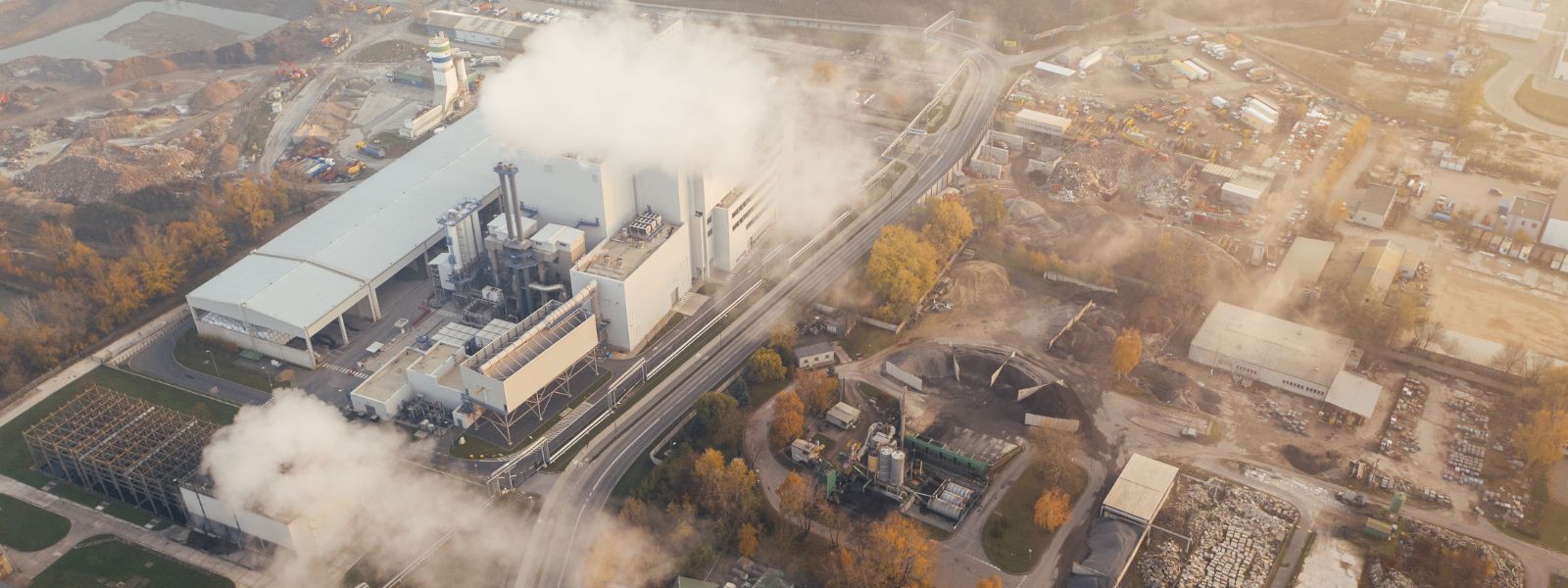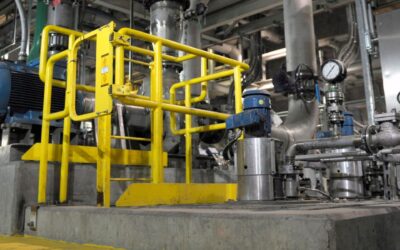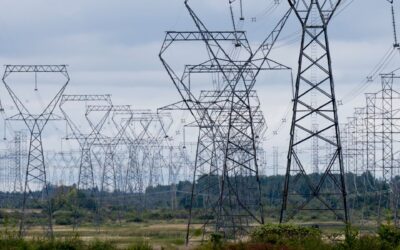Industrial carbon pricing offers a powerful incentive for Canadian industries to reduce their emissions and invest in long-term competitiveness.
At least, it’s supposed to.
In reality, there are substantial flaws in Canadian carbon markets, such that they’re setting weaker incentives than intended, undercutting what should be Canada’s most impactful emissions reduction policy.
The problem is the way that systems have been designed. Functional markets need a robust balance of supply and demand, clarity about their long term prospects, and transparency about their workings. Yet all too often, governments have made choices that cut against these fundamentals.
This analysis explores five choices that have made Canada’s carbon markets less able to reduce emissions and promote long-term competitiveness:
- Adopting overly generous performance standards
- Setting an uneven playing field for facilities
- Limiting the use of carbon credits for compliance
- Making it easier for some facilities to leave carbon markets
- Using revenue to weaken the price signal
Fortunately, these choices can be remade. Provincial governments have the tools to reinvigorate supply, demand, and certainty in their carbon markets. And the federal government has minimum national standards, known as the benchmark, that can be revised to give clearer guidance while permitting regional variety. It is only with stronger, more transparent, more harmonized design choices that industrial carbon pricing can deliver to its full potential.
1. Choosing overly generous performance standards
The commodities of a carbon market are performance credits and offsets, each one representing a tonne of emissions reductions. Projects that reduce emissions generate these credits, and facilities can trade them for cash. The higher their price, the greater the reward (and therefore, the incentive) for reducing emissions. Generally, Canada’s carbon markets are supposed to have enough demand for credits to keep them trading at close to the national carbon price ($95 a tonne this year).
But in some provinces, this price is much lower than it should be. In Alberta’s Technology Innovation and Emissions Reduction (TIER) system, credit prices have fallen to around $20 a tonne. Credit prices in British Columbia and Ontario are also likely to fall; while Saskatchewan would face the same problem had it not suspended its system. And in Quebec, though a price floor prevents the price from crashing completely, credit prices have still been trending downward for more than a year.
The main design choice behind this problem is the level of performance standards.
The performance standard is what sets the allowable level of emissions for a facility. If the facility’s emissions are below the level, it earns credits; if they exceed the level, it must either pay the carbon price, or obtain extra credits. The level of the performance standards thereby helps to shape the supply and demand for credits, and so, their price.
Essentially, some systems are setting overly generous standards. The result is that too many credits are being generated, and too few are in demand, putting downward pressure on their price.
Performance standards will always reflect a tradeoff between reducing emissions and minimizing costs for industry, but the balance has shifted too far toward the latter. According to Institute calculations, the average cost of emissions in Canada is around $10 a tonne. For some oil sands facilities, that works out to the cost of a Timbit per barrel. Meanwhile, there are enough performance credits and offsets floating around the TIER market to satisfy demand for more than two years. There’s room to tighten these markets.
2. Choosing to set an uneven playing field
The level of a performance standard matters, but the way that the standard is set also shapes the incentives that facilities face. In principle, industrial carbon pricing makes facilities compete against each other based on carbon intensity. Yet two design choices are carving up that playing field, allowing facilities to avoid competing with the best performers.
First, many standards are set based on facility-specific emissions intensities, rather than the emissions intensity for a given product. The effect of these facility-specific standards is that low performers get a low bar and high performers get a high one, even if they make the same product. The impulse is reasonable (to protect jobs and recognize that facilities face different conditions), but the outcome can be perverse (older, more emissions-intensive facilities get an advantage over newer, cleaner ones). This is not only unfair, it also makes the policy less effective.
Second, some sectors or facilities get special treatment. In British Columbia’s Output-Based Pricing System (OBPS), for example, there is no published performance standard for liquefied natural gas facilities. It seems likely that these standards will be negotiated facility-by-facility, unlike most of the B.C. OBPS, which sets performance standards based on the product being made. Meanwhile, in Ontario, some large steel facilities appear to have renegotiated their performance standards, and in Alberta, the rules allow facilities to request new (and almost certainly lighter) performance standards.
This way of setting performance standards privileges the status quo over competition, and discretion over effectiveness. The fact that these standards are largely confidential only makes unfairness more likely and reform more challenging. A level playing field demands standards that are more transparent, and that harmonize over time.
3. Choosing very strict limits for the use of credits
Facilities have various options to meet their emissions limit, typically some combination of surrendering performance credits and offsets, and paying the carbon price. Many systems set a limit on how many credits or offsets can be used, requiring facilities to cover any other excess emissions by paying the carbon price.
In B.C., these limits are so tight that they will have a detrimental effect on the market. The B.C. OBPS sets a declining cap on the quantity of performance credits and offsets that facilities can use to meet requirements, falling to a low of 30 per cent in 2026. This is likely to create a bottleneck: since facilities can only use so many credits each year, any excess credits will accumulate in the system. And since B.C.’s credits don’t expire, they will only keep accumulating. The result will be a lower price for these credits.
The irony is that B.C. adopted this approach to make its system more stringent, forcing facilities with excess emissions to pay the full carbon price on a larger share of those emissions. This is a way to make the system stringent even if its market isn’t functioning properly. The choice ensures that more emissions will be covered by the headline carbon price, but also leads to low credit prices and less reward for emissions reductions. Carbon markets aren’t only supposed to be a stick; when functioning properly, they should also deliver a proportional carrot.
4. Choosing to cover fewer emitters
Markets are nothing without participants. Yet there is no single standard for who should participate in Canada’s carbon markets. Instead, every large-emitter trading system sets its own threshold above which facilities must participate, and these thresholds vary widely across the country.
Once upon a time, this design choice mattered less. When the federal fuel charge was in place, facilities below the mandatory threshold would choose to participate in large-emitter systems rather than pay the fuel charge. These were known as “opt-in” facilities. Without the fuel charge, these facilities no longer have the same incentive to participate. Yet without these facilities, markets would not only cover fewer emissions, they would also have less demand for credits.
Under current rules, opt-in facilities are supposed to continue to participate in carbon markets, at least for a time.
But some provinces are making it easier to leave. Alberta and Ontario have implemented changes to their systems that would allow opt-in facilities to leave the carbon market earlier than would normally be permitted. They argue that this will simplify the administrative burden for smaller facilities.
In fact, it’s unclear that there’s much of a burden for facilities that are already participating, but it is clear that these changes will accelerate the weakening of carbon markets. According to research by the Institute and Navius Research, opt-in facilities account for up to 31 megatonnes of emissions across Canada, or 9 per cent of the country’s industrial emissions. The vast majority of opt-in emissions are in Alberta, because the province has an exceptionally high threshold for participation: 100 kilotonnes, equal to the annual emissions of nearly 22,000 cars.
Alberta and Ontario’s changes will further shrink demand in their carbon markets and allow facilities to avoid the carbon price—even though some of these facilities would be covered in other provinces. Once again, the case for harmonization is obvious.
5. Choosing to use revenue to weaken the price signal
The federal benchmark has only one rule for the use of carbon pricing revenues: they can’t be used to offset the price signal. Yet that is exactly what two provinces have planned to do.
In 2024, Ontario launched the Emissions Performance Program, which allows emitters to claim as much as the full amount they paid in carbon charges if they commit to using the funds for emissions-reducing projects. As the Institute has written before, this approach creates perverse incentives: firms that emit more may pay more, but they can also get more back. That at least partly negates the incentive to reduce emissions.
Meanwhile, Alberta is adopting a similar principle but in reverse: rather than giving money back in proportion to spending, facilities can earn credits for what they spend on decarbonization.
Alberta’s proposed “direct investment compliance option” would allow facilities to claim certain on-site investments against up to eight years of compliance obligations. While investment credits will make emissions reductions cheaper, they will essentially count emissions reductions twice, piling more credits onto an already oversupplied system. And the criteria for these credits are not yet clear, so they may encourage free ridership, or simply not reduce emissions. Unsurprisingly, in the aftermath of the announcement, TIER credit prices fell even lower.
An alternative: choosing certainty
Industrial carbon pricing is mired in uncertainty. Choices about how these markets operate, along with decisions like Alberta’s freeze on its carbon price and Saskatchewan’s wholesale suspension of its system, have made the problem worse.
Uncertainty is deadly for markets. If industrial carbon pricing systems remain as they are, they will reduce fewer emissions. But governments can choose better design that will provide more certainty.
Provinces have all the tools they need to fix their systems. They know their local industries best and can finely tune their markets to keep protecting competitiveness while giving facilities a more meaningful incentive to improve their performance.
There is also a clear role for the federal government. Its carbon pricing benchmark exists to give some coherence to a diverse landscape of carbon markets, and to ensure that the various actors are playing fair. A revised benchmark should provide clearer and more specific guidance about the fundamentals of good market design. And if all else fails, there is a robust federal backstop system that can be applied anywhere in the country.







